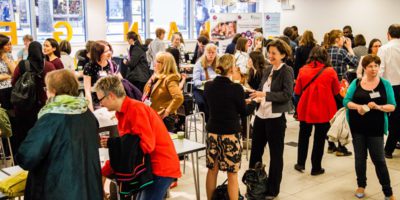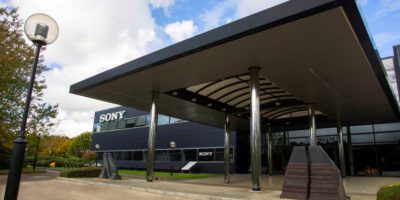Andrea Naseem is a Product Application Engineer at Cummins Generator Technologies (CGT) in Peterborough. She studied for her Bachelor’s Degree in Engineering, Electrical and Electronics Engineering at the University of Bradford, followed by her Masters of Science in Engineering Project Management at the University of Leeds. CGT produces alternators designed for prime power, standby, oil and gas, mining and marine.
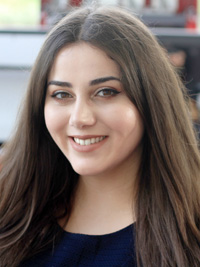
“…my first advice is to understand your main drivers and passions. Once you have an idea of what you are interested in, then the search for selecting an appropriate engineering discipline can begin…”
“You have a problem – figure it out!”
My career is at its early stages, nonetheless, one filled with excitement and change. I started my career in Cummins Generator Technologies (CGT) as a graduate Product Applications Engineer. During the first half of my graduate scheme, my focus was to provide technical expertise to our customers, and more specifically aligning their power and application needs with the most appropriate alternator solution.
For the second term of my graduate scheme, I have had the opportunity to transition to another function within the same department (Customer Engineering). This is my current roles as well. This role, involves leading the Customer Engineering lane for New Product Introduction (NPI) programmes.
A great influence of me becoming an engineer was my father. He is a chartered electrical engineer himself and has his own business. He is a great role model, as he would never tell me I could not do something, in terms of career. He actually encouraged me to follow his footsteps.
Every summer holidays, I would work with him, doing light and power designs for complex buildings. I remember the first day I arrived at the office, he gave me a laptop, an office drawing and asked me to complete all the power design for that specific building. I just looked at him, and said, “You know I am 16, and it’s my first day at work, right?” And right there and then, I learned the first lesson of being an engineer “You have a problem – figure it out!” Within the same week, I learned how to use AutoCAD and to get the job done. That feeling of being lost, and then finding your way and making it, that’s what engineering is all about for me.
My role on a day to day basis

Another key deliverable is conducting validation trials with our customers. For example, fit and form trials between the alternator and the engine, and its overall electrical and mechanical performance when incorporated into the generator. Here, my role is to liaise with customers, the Marketing and Commercial teams, in order to gain customers’ agreement for our trials.
My job from day to day varies quite significantly, as things tend to change a lot, and I need to adapt to the needs of each programme. However, if I was to summarise my day to day job, is to align functions to complete all customer facing deliverables.
Being a hybrid introvert
A typical stereotype of engineers is that we are introverts. Well, in this case the stereotype is right, because I am an introvert myself. However, I call myself a hybrid introvert, and that is because of my current role. The most rewarding part of my role, is surprisingly interacting with people.
My job relies on other functions delivering things on time, as I will be requiring it as an input to complete my own tasks. At the beginning of my role, I was emailing people telling them “Do this for me, by this time”, and the time would usually be now. Well there was no surprise that nobody would deliver anything. Then I decided to pay them a visit and tell them that I need something and they have to do it. And yes, I would skip all the introductions, hellos and how are you conversations as I thought were time consuming. Even then, no results until one day I decided to change approach and get really interested in people.
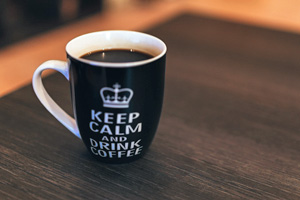
So, you fix stuff?
Quite recently, one female acquaintance asked me what I do for a living. I replied with “I am an Applications Engineer”. The next question I was expecting was “What is an Applications Engineer?”, as application engineering is not a taught university degree, and people may not know what it means. Instead, I got the typical reply “Engineer? So, you fix stuff?”
Having being faced with this question so many times (I have lost count) I have formulated a ready response. I explain to them that engineering is not necessarily about fixing stuff. Is more about creating, innovating, designing and problem solving. Then I move on to explaining the difference between an engineer and a technician, by giving the example of car design engineer and a mechanic. The person that actually thought about the performance, the looks, the functions of the car – that’s an engineer. A technician or a mechanic is the person who will fix the car, once a component breaks.
Engineering IS creative
Another example of how the current perception of engineering is putting women off is illustrated by my younger sister. She loves doing make-up and wants to be a make-up artist. However, my parents come from a background where unless you go university, you are minimising your chances of success. So, skipping university and doing a one month course on make-up was not an option.
At that moment, I decided to persuade my sister to go to university. I asked her why she wanted to be a make-up artist. Her response was: “It’s creative, it allows me to express myself.” My next question, was regarding her future: “So, once you become a make-up artist, what’s next?” “Oh, I don’t want to be just a make-up artist. I want to have my own business, develop my own products, be more and more creative!” And that’s when I said: “What about engineering?”
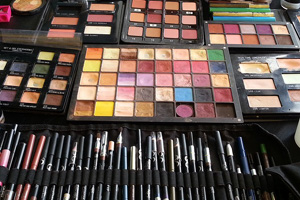
Engineering – literally something for everybody
For me, engineering has to relate to something I am passionate about. All of the objects that surround us have been engineered and developed because somebody had the vision and the passion have an idea and to do something about it. Therefore, my first advice is to understand your main drivers and passions. Once you have an idea of what you are interested in, then the search for selecting an appropriate engineering discipline can begin.
For example, if you have a great interest in the environment and sustainability, then there is that exact engineering discipline you can follow. Another example, is when someone has a passion of helping people, specifically around the medical field, one option could be medical engineering or even biomedical. The options are there, all you need to do is have a look. A simple internet search on ‘engineering disciplines’ will increase your knowledge of what engineering has to offer.
Engineering needs a total re-brand
So, how do we make engineering more attractive to more women? Engineering needs a total re-brand!
- We need to clarify what engineering is about, and what is not.
- We need to advertise the diversity of engineering disciplines and their relevant industries.
- We need to associate engineering with creativity and personal expression. You can create and design your own stuff.
- We need to make it our personal mission to engage people in engineering. Make a start with your closest friends and family.
Plans to celebrate International Women in Engineering Day this year
Since I joined CGT I have participated in numerous projects that aim to attract and retain more women in engineering. For me this year, is about celebrating our achievements and progress, and most importantly letting people know about it.
Visuals will be displayed across different sites of CGT, representatives from the affinity groups of technical women and STEM ambassadors will be promoting their projects and getting more volunteers to help make a change.
Why International Women in Engineering Day is so important
Having a dedicated day where female engineers are celebrated is quite important for raising awareness and helping remove barriers and stereotypes. This also gives an insight to potential female engineers on what type of career they can develop in engineering. In addition, International Women in Engineering Day is important as it gives the right visibility to key female engineering figures – this is a great opportunity for female engineers to gain role models and potential mentors.
Exciting times for me and Cummins Generator Technologies
CGT is going through some exciting times right now, as we are doing a complete refresh of our product lines. As with any engineering company, products need to be up-to-date, in order to continuously address market and customer needs.
As stated, my career is still at its early stages, however, one filled with change. I am looking forward to transitioning to my new role, where it is critical for the planning and completion of these product refreshment programmes. I will be joining the Product Planning team, where, my key responsibilities will evolve around scoping programmes, understanding key future technologies and applications that the company should be investing in, along with market research and many more.
This role differs significantly from the one I am currently doing. I will still be heavily involved with engineering aspects (we are a technology company after all!) however, this time it will be engineering from a business perspective.
I believe my technical background is what has given me the edge to be able to transition in such a diverse role. Having engineering as my foundation, has given me the opportunities to broaden my career horizons. Is worth highlighting that engineers can be very good at any career they choose, as being an engineer means being able to logically solve problems and adapt – qualities that any job requires.
https://twitter.com/stamfordavk
https://twitter.com/AndreaNaseem


